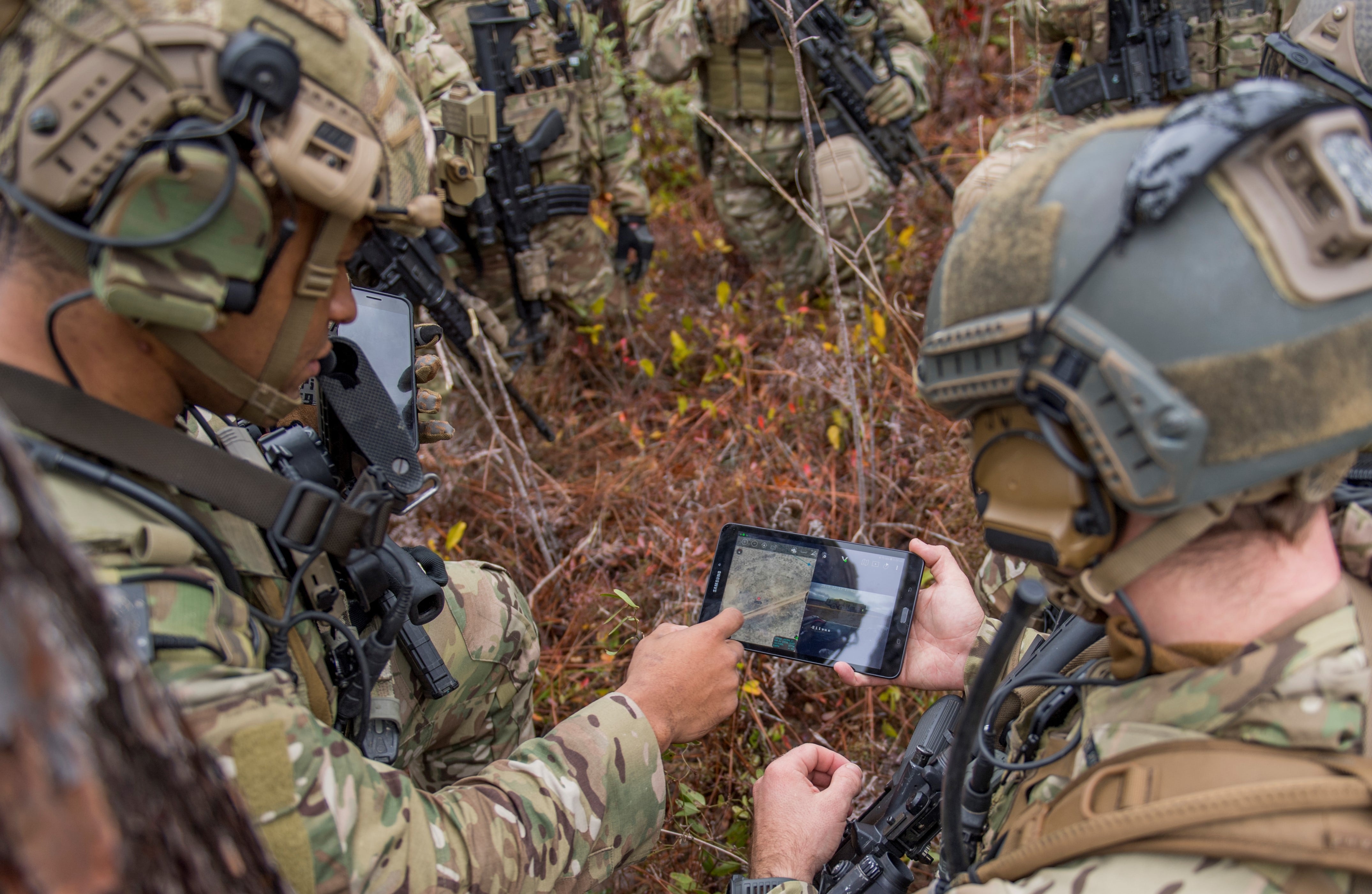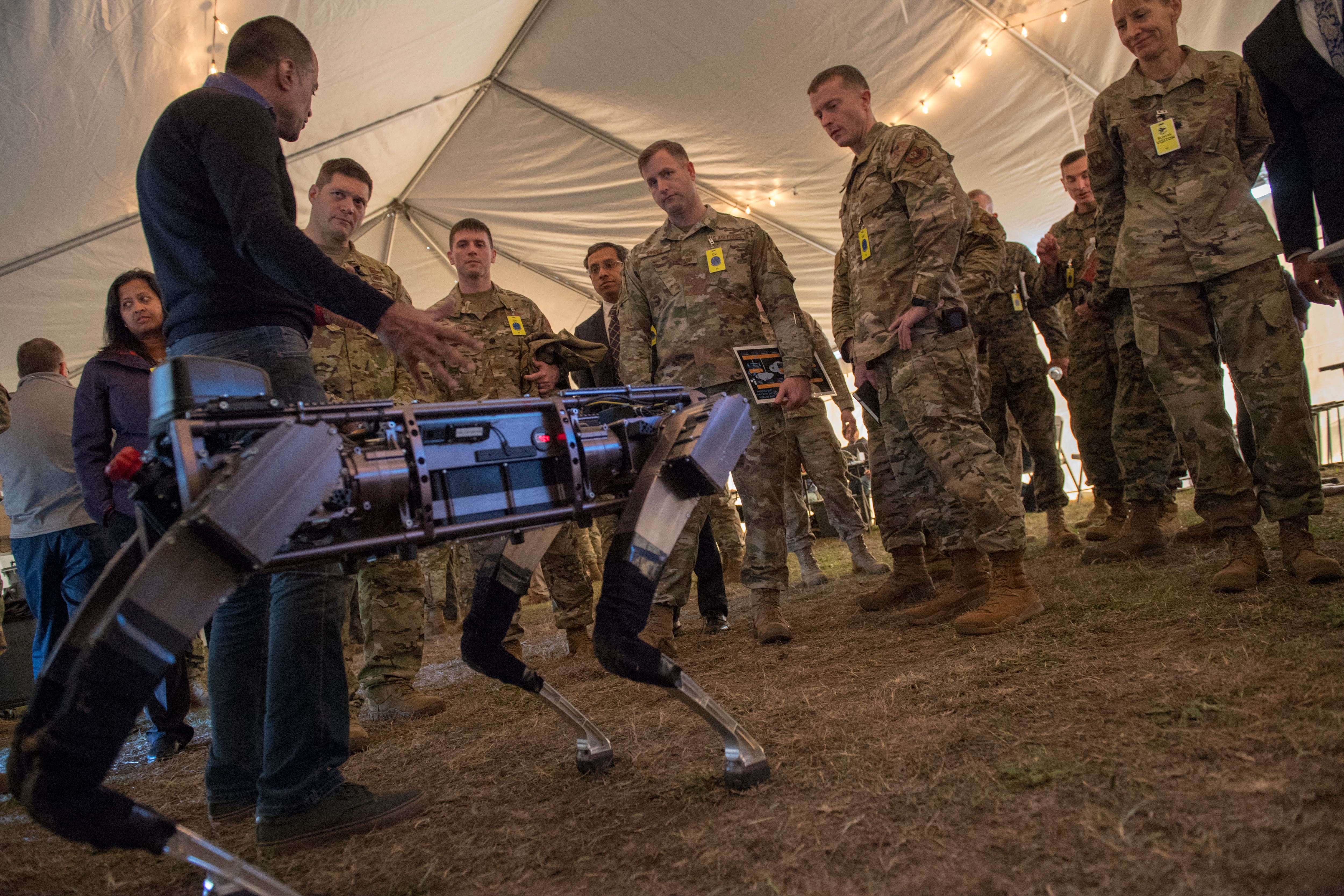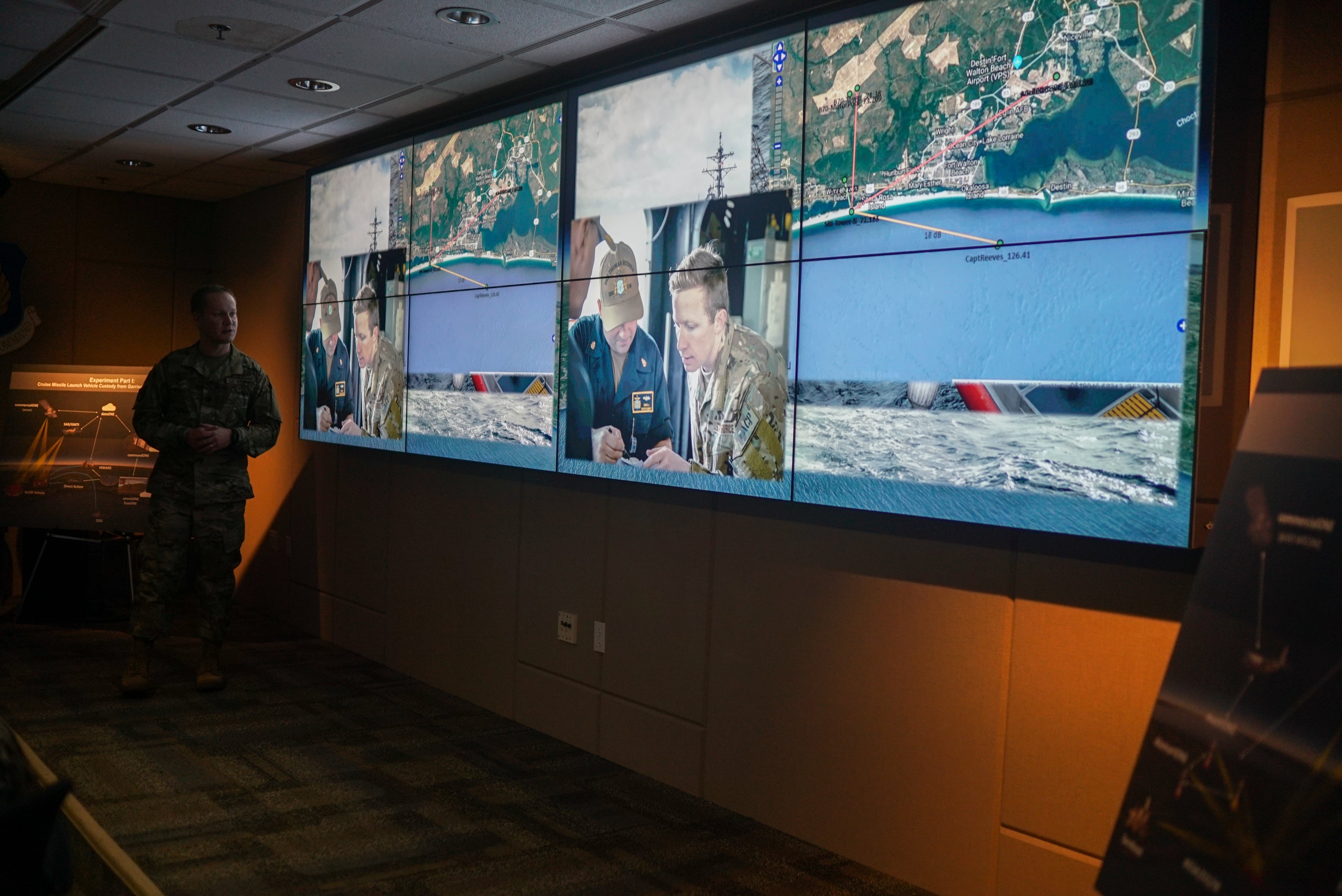WASHINGTON — The Air Force is ramping up its efforts to test and field a suite of new hardware and software that will become the military’s command and control backbone.
Since February, the Air Force has published three separate broad area announcements seeking technologies that could be funneled inside the Advanced Battle Management System, the service’s effort to seamlessly connect all of the Department of Defense’s equipment and pool together its data to form a complete picture of the battlespace.
Then, in May and July, it awarded the first two mega-batches of ABMS contracts, with 46 companies in total winning $1000 and a chance to compete for more money down the road.
“We want a wide variety of companies, and we definitely want fresh blood in the ABMS competition,” Will Roper, the Air Force’s acquisition executive, told reporters on May 14. “There is a lot that can be contributed from companies that are commercially focused, that know a lot about data, that know a lot about machine learning and AI and know a lot about analytics. Those are going to be the most important parts of the Advanced Battle Management System.”
RELATED

ABMS is the Air Force’s piece of the military’s fledgling Joint All Domain Command and Control concept.
The vision involves networking every shooter and sensor to a cloud computing environment and using artificial intelligence to ensure that relevant information is immediately sent to whichever platform needs it. In practice, that could look like compiling data from a Global Hawk drone and a naval destroyer to help cue a fighter jet to lock its missile on a nearby target.
While the Air Force has some big picture ideas of the products that will comprise ABMS — such as cloud computing tools, machine learning technologies and apps — it hasn’t set firm requirements or laid out exactly what products it needs to build out the system.
Through the BAAs, the government plans on bringing in companies using different styles of contracts and agreements, which Roper said will allow startups, commercial tech firms and other nontraditional players to “find their fit with this mission.” Those companies will then bring their products and technologies for week-long field tests, held three times a year. The next phase of experiments is planned to start on Aug. 31.

While the service had already performed one experiment with technologies that could become part of ABMS and had put several dozen companies on contract prior to May, the Air Force sees the broad area announcements as vehicles to capture a wider array of technology firms that may not already do business with the government, Roper said.
Each BAA has multiple rolling deadlines, with the Air Force hoping to award contracts anywhere from four to six weeks after a company submits a proposal. The first announcement seeks out proposals for traditional indefinite delivery/indefinite quantity contracts.
The second solicits ideas and technologies through a two-step process, where industry would submit information about the concept before being invited to submit a formal proposal, which the service says will allow participation from contractors “who are unsure about how they want to proceed but want to share their idea.”
The third announcement invites companies with existing products to join ongoing ABMS technology demonstrations — at no cost to the government — through cooperative research and development agreements.
The service also held a series of industry days, starting May 13, to help answer questions about the effort, especially from businesses that don’t usually work with the Defense Department.
“We had over a hundred companies just in the first day, and we are expecting more than 300 before the end of this first event,” Roper said. “Three hundred companies for the first industry day … is a good start. That’s certainly broader than the number of defense primes that we have or even the major suppliers.”
Each of the announcements specify seven broad areas where the service is seeking new technologies or ideas:
Digital architecture, standards and concepts: The Air Force is looking for digital modeling and simulation technologies, trade studies and other standards development tools and processes that it can use to map out the entire ABMS architecture virtually and test how it would work in practice.
Sensor integration: In essence, the service wants any hardware or software that will allow different equipment to share data. “A key interest of ABMS is the compatibility and interoperability capabilities through the use of open interfaces to enable improved control of systems and the processing of their data,” the service said in the BAA.
Data: The Air Force is also interested in “cloud-based data repositories” that could pass information across domains to the different services. These libraries of data points will be “meta tagged,” analyzed and then fused using AI algorithms to help inform military decision makers.
Secure processing: The service needs technologies that will be able to move the appropriate data across technologies with different security levels, ensuring that classified information stays protected while sharing what is feasible. It also includes deployment, training and support services for all devices and processing environments.
Connectivity: These tools include line-of-sight and beyond line-of-sight communications networks, as well as technologies that can turn a platform into a data node, reduce latency, provide improved anti-jamming capabilities or other functions that improve the speed and breadth of communications gear.
Applications: iPhone analogies have become Defense Department clichés at this point, but the Air Force is hoping to commission the design and development of apps to process, fuse and help present data to different audiences across domains.
Effects integration: These involve networked weapons that can be integrated with existing platforms for a greater combined effect. “This includes, but is not limited to smart munitions and low-cost autonomous platforms” that can carry out functions such as data relay.
The Air Force is slated to spend $300 million on the Advanced Battle Management System through fiscal year 2021, according to the Government Accountability Office, which has also warned that the nontraditional structure of the program could put it “at greater risk for schedule delays, cost growth, and integration issues.”
Preston Dunlap, the Air Force’s chief architect charged with overseeing the ABMS effort, said the the price of technologies will undeniably be an important criteria, and the service will try to reduce costs by using affordable and readily available commercial products whenever possible.
“That’s one of the core principles that we have to manage costs,” he said during a May 7 event hosted by the Mitchell Institute for Aerospace Studies. “We’re able to take advantage of the commercial pressures and marketplace to keep the costs down. That’s different. Normally it’s flipped. If we’re the primary customer here, we’ve got to be very concerned about cost growth associated with that. Right now, in some sense, we’re the small buyer.”
While the Air Force will better be able estimate the total cost of ABMS as experiments go on, the current focus of the effort is figuring out how to inject innovative commercial tech into the military system as quickly as it becomes available, Dunlap said.
“I’m less worried at the moment about some of those cost issues because if we’re in that cycle we’re probably not doing it right,” he said.
Valerie Insinna is Defense News' air warfare reporter. She previously worked the Navy/congressional beats for Defense Daily, which followed almost three years as a staff writer for National Defense Magazine. Prior to that, she worked as an editorial assistant for the Tokyo Shimbun’s Washington bureau.






